F1b Mini Goldendoodle: Your Ultimate Guide to This Adorable Breed
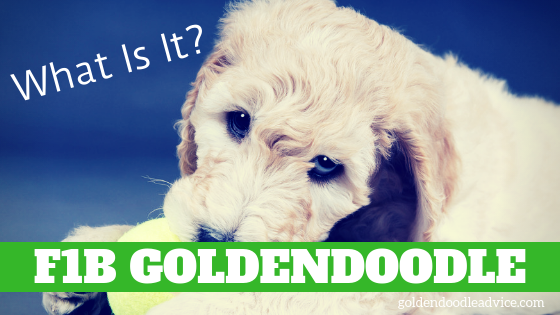
The F1b Mini Goldendoodle is rapidly gaining a loyal following among dog lovers, admired for their irresistible looks and excellent disposition. This charming hybrid breed comes from mating an F1 Goldendoodle, a cross between a Golden Retriever and a Poodle, with a Miniature Poodle.
The F1B Mini Goldendoodle mix typically results in a dog that is 75% Poodle and 25% Golden Retriever, making them an ideal choice for people prone to allergies, as their coats tend to be more hypoallergenic.
Apart from their hypoallergenic characteristic, F1b Mini Goldendoodles inherit the best traits from both parent breeds. These dogs are gentle, affectionate, and intelligent, making them perfect family pets. Their smaller size, stemming from the Miniature Poodle, ensures they are suitable companions even for those with limited living spaces such as apartments.
Key Takeaways
- F1b Mini Goldendoodles are a mix of an F1 Goldendoodle and a Miniature Poodle.
- These hybrids are more hypoallergenic, making them ideal for allergy sufferers.
- F1b Mini Goldendoodles are gentle, affectionate, and intelligent family pets.
While you are researching F1B Goldendoodles, be sure to bookmark these popular articles: What Does A Mini Goldendoodle Cost? How to Estimate a Mini Goldendoodle Weight? How Big Do Mini Goldendoodles Get? and save the Goldendoodle category page.
F1B Mini Goldendoodle Basics
Golden Retriever

The Golden Retriever is a friendly, intelligent, and devoted breed known for its affectionate and playful nature. This breed is a great family dog and loves to be around people. It’s also known for its long, beautiful coat which requires regular grooming.
Poodle
Poodles are highly intelligent, loyal, and trainable dogs. They come in three sizes: Standard, Miniature, and Toy, making them suitable for different family needs. Poodles are hypoallergenic due to their non-shedding curly coat, making them a popular choice for people with allergies.
Goldendoodle
A Goldendoodle is a hybrid breed that combines the best traits of the Golden Retriever and Poodle. They are friendly, intelligent, and adaptable, making them excellent companions. Goldendoodles are typically low shedding, making them suitable for people with allergies.
F1
An F1 Goldendoodle refers to the first generation offspring of a Golden Retriever and Poodle. This generation has a 50/50 mix of the parent breeds’ traits, including coat type, personality, and size. F1 Goldendoodles generally have wavy coats that are low shedding.
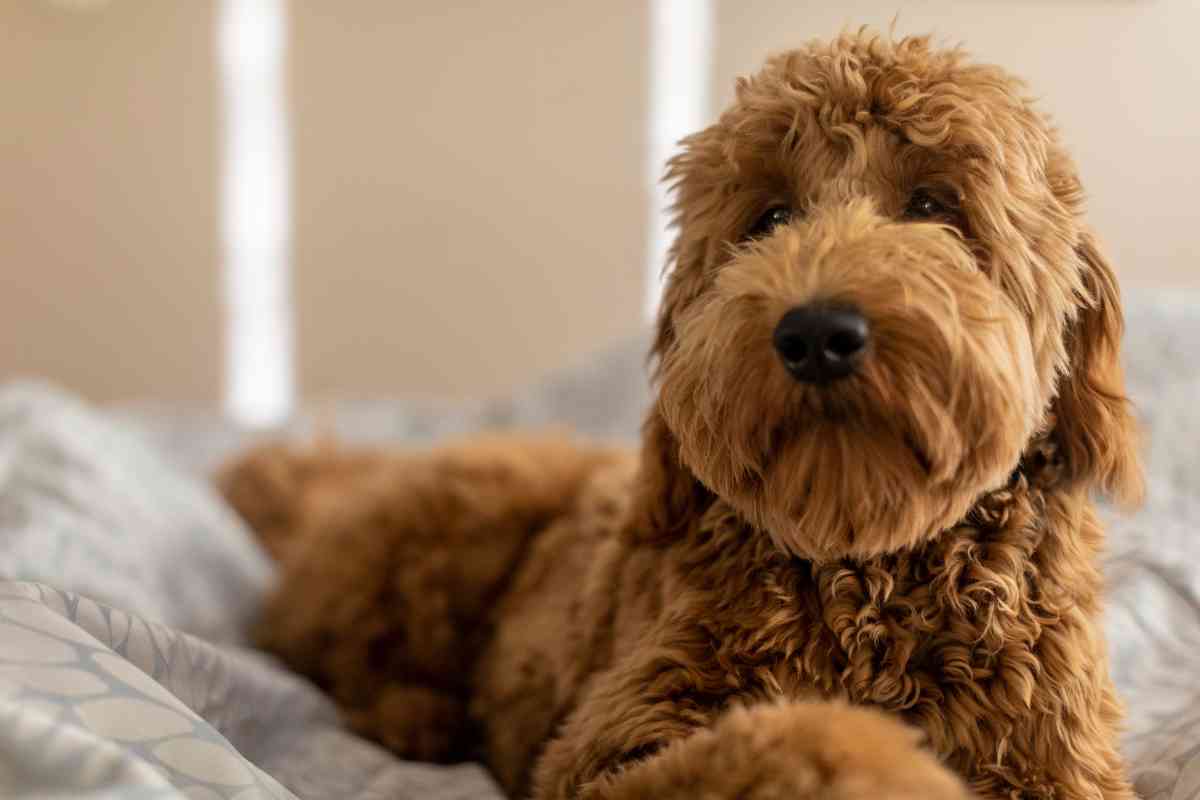
F1B
F1B Mini Goldendoodles are a cross between an F1 Goldendoodle and a Miniature Poodle. This generation has a higher percentage of Poodle traits, being 75% Poodle and 25% Golden Retriever. The increased percentage of Poodle genes means that F1B Mini Goldendoodles are even less likely to shed and more hypoallergenic than F1 Goldendoodles.
| Generation | Parent Breeds |
|---|---|
| F1 | 50% Golden Retriever x 50% Poodle |
| F1B | 25% Golden Retriever x 75% Poodle |
Generation
Goldendoodle generations refer to the classification of their lineage based on the combination of different Golden Retriever and Poodle parentage generations.
Understanding the different generations will help you better understand the potential traits, size, and coat type of your F1B Mini Goldendoodle puppy.
Physical Characteristics
Size
F1B Mini Goldendoodles are small to medium-sized dogs. As an owner, you can expect your F1B Mini Goldendoodle to weigh between 15-35 pounds and stand at around 11-17 inches tall. The size range sits well between 26 to 35 pounds and 14 to 17 inches to the shoulder.
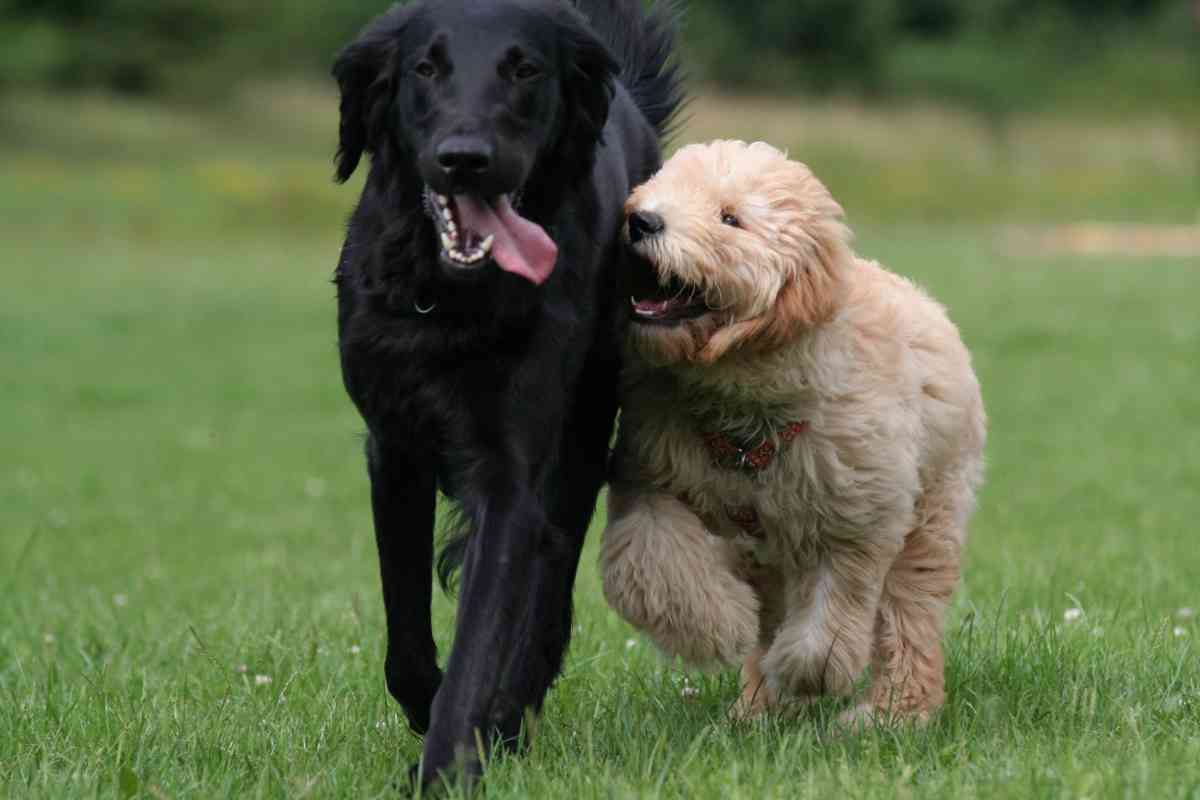
Coat Types
Your F1B Mini Goldendoodle’s coat can vary depending on the parent’s genes. There are three primary coat types you may encounter:
- Wavy: A low-shedding, wavy coat is common among F1B Mini Goldendoodles. This coat type requires regular grooming to prevent matting and tangling.
- Curly: Another coat type you might see is the curly coat, which closely resembles the Poodle parent. This coat type is also low-shedding and hypoallergenic, making it ideal for individuals with allergies. However, the curly coat requires even more grooming and maintenance compared to the wavy coat.
- Straight: Though less common, some F1B Mini Goldendoodles may have a straight coat that resembles the Golden Retriever parent. This coat type typically sheds more and may not be hypoallergenic.
Color
F1B Mini Goldendoodles come in a variety of colors, with one of them being red. Other possible coat colors include:
- Cream
- Apricot
- Chocolate
- Black
- Parti (two or more distinct colors)
Remember, coat color may change as your dog matures, which is normal and nothing to worry about. Keeping your F1B Mini Goldendoodle’s coat well-maintained and regularly groomed will ensure it stays healthy and vibrant.
Temperament and Personality
Friendly
F1b Mini Goldendoodles are known for their friendly and outgoing nature. They are sociable and enjoy being around people and other animals. Your F1b Mini Goldendoodle will easily make friends at the dog park, in your neighborhood, or even on a walk.
Playful
As a mix of the energetic Golden Retriever and the fun-loving Miniature Poodle, Mini Goldendoodles are playful dogs that enjoy various activities. They will happily play fetch, catch, or join you for a jog to help burn off their energy.
Intelligence
The intelligence of both the Golden Retriever and Poodle is inherited by your F1b Mini Goldendoodle. This breed is known for being highly intelligent, which is one of the reasons they are popular as service and therapy dogs.
Their intelligence makes them keen learners and quick to pick up on new tasks or tricks.
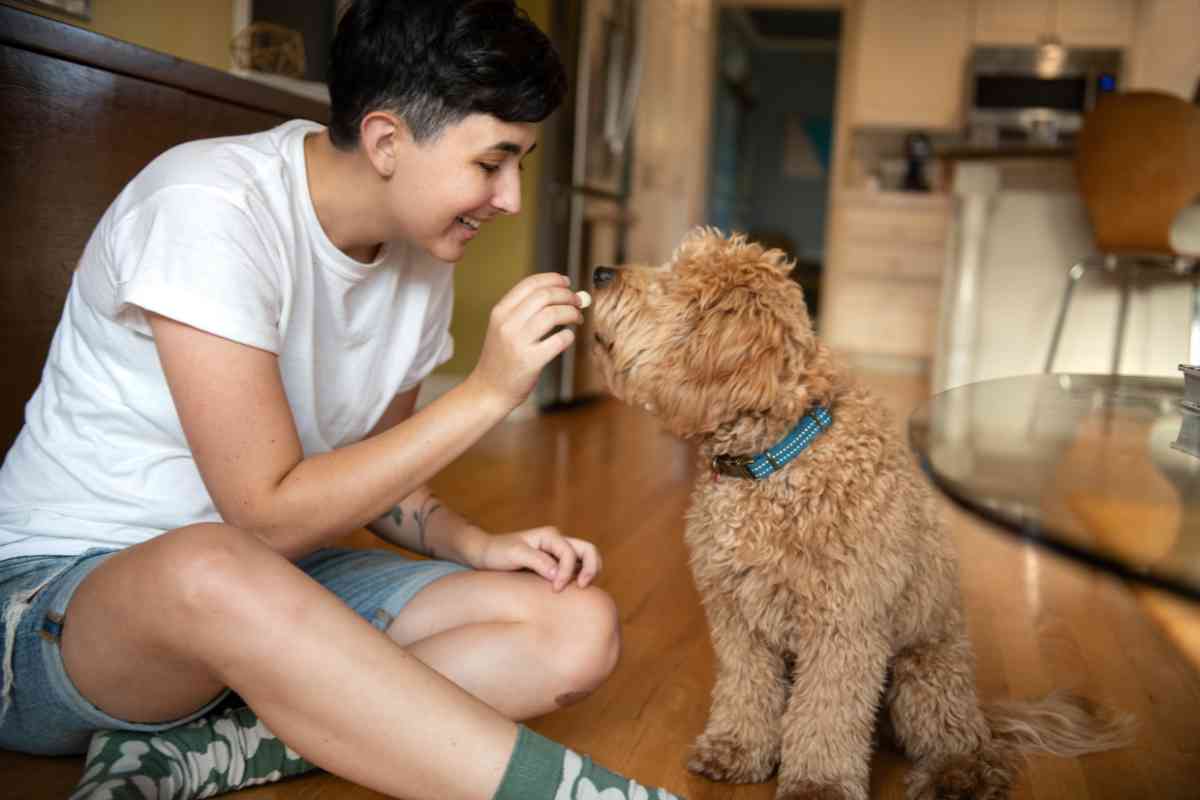
Loyal
Your F1b Mini Goldendoodle’s loyalty stems from their Golden Retriever parentage. They form strong bonds with their human families and strive to please their owners. You’ll find a loyal companion in this breed who will always be by your side.
Easy to Train
With their combination of intelligence and eagerness to please, F1b Mini Goldendoodles are generally easy to train.
Remember to use positive reinforcement and stay consistent with your training methods to achieve better results. Starting early with socialization and basic obedience will help your F1b Mini Goldendoodle grow into a well-behaved and well-rounded dog.
Health and Care
Hypoallergenic
F1B Mini Goldendoodles are often considered hypoallergenic dogs due to their Poodle lineage.
While no dog breed is 100% allergen-free, the F1B Goldendoodle with 75% Standard Poodle and 25% Golden Retriever genetics has curlier Poodle coats that can be better for allergy-sensitive pet parents.
Shedding
These adorable hybrids shed very little, making them a great choice for those who want a low-shedding dog.
However, their coat still requires regular care and grooming to maintain its health and appearance.
Health Issues
To keep your F1B Mini Goldendoodle healthy, be aware of potential health issues that can affect this breed mix. Common health issues include:
- Hip dysplasia
- Eye disorders
- Heart conditions
- Skin problems
It’s essential to have regular check-ups with a veterinarian and to keep an eye out for any signs of these issues.
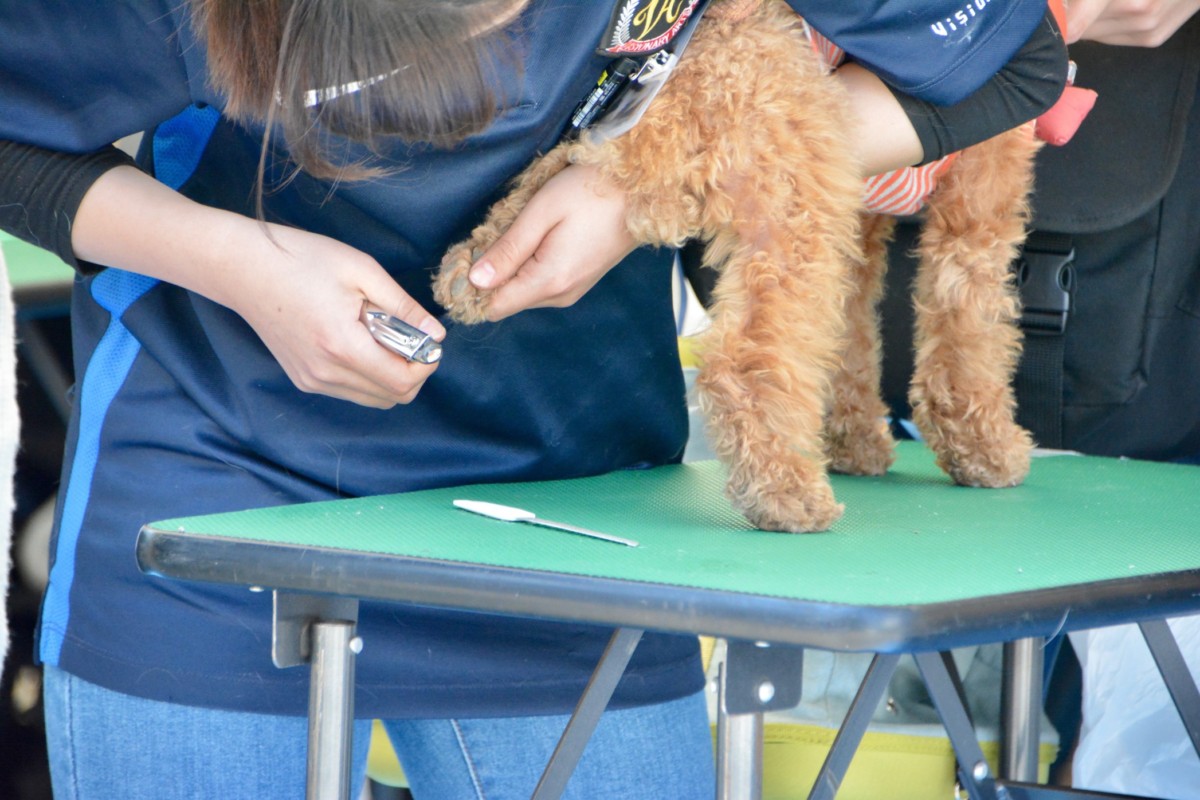
Grooming
Your F1B Mini Goldendoodle’s coat requires regular grooming to prevent matting, tangles, and to maintain its overall health.
Brushing should be done at least once a week; professional grooming is recommended every 6-8 weeks. To avoid skin problems and irritations, always use dog-specific grooming products.
Learn about my 3 favorite brushes that are a must-own for any Goldendoodle owner.
Exercise
Physical activity is essential for this breed mix, as it keeps them healthy and helps to prevent boredom and destructive behaviors.
Ensure your F1B Mini Goldendoodle receives daily exercise, such as walks, playtime, or interactive games, to stimulate them physically and mentally.
Read Veterinarian Dr. Sara Ochoa’s Guidelines for Goldendoodle Exercise
Trainability
F1B Mini Goldendoodles are known for their intelligence and trainability. Start training your dog early and use positive reinforcement techniques to build a strong bond between you and your pet.
Don’t forget to be patient and consistent during training sessions, and your F1B Mini Goldendoodle will soon respond well to your commands.
Breeding and Generations
F1 Mini Goldendoodle
Regarding the F1 Mini Goldendoodle, this is a first-generation crossbreed resulting from breeding a Golden Retriever and a Miniature Poodle.
Being a 50% Golden Retriever and 50% Poodle mix, you can expect a balanced blend of both parent breeds’ characteristics.
A key advantage of this generation is its hybrid vigor, which often leads to healthier offspring compared to purebred dogs.
F1B Goldendoodle
For the F1B Goldendoodle, breeders cross an F1 Mini Goldendoodle with a Miniature Poodle. The resulting offspring typically consist of 75% Poodle and 25% Golden Retriever genetics.
The motivation behind breeding F1B Goldendoodles is the increased likelihood of a hypoallergenic coat, thanks to the higher proportion of Poodle genes.
F1BB
Continuing with the backcrossing, the F1BB Goldendoodle results from breeding an F1B Goldendoodle with a purebred Poodle.
In this case, the offspring will have 87.5% Poodle and 12.5% Golden Retriever genes. This generation is less common, but it can be beneficial for potential owners seeking an even higher Poodle proportion.
F2
The F2 Goldendoodle is created by breeding two F1 Goldendoodles together. The offspring will have a genetic makeup of 50% Golden Retriever and 50% Poodle, just like the F1 generation.
However, due to the less predictable genetics, it’s important to note that F2 Goldendoodles may display a wider variety of coat types and shed more than F1B or F1BB generations.
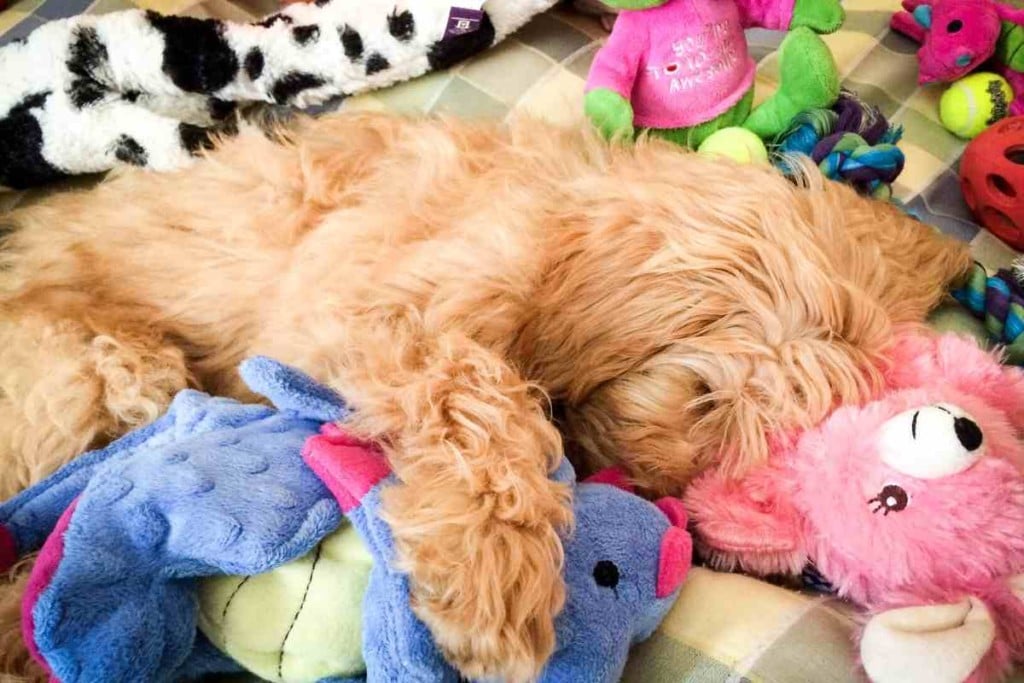
F2B
The F2B Goldendoodle is a cross between an F1 Goldendoodle and an F1B Goldendoodle. Consequently, their genetic makeup consists of 37.5% Golden Retriever and 62.5% Poodle.
Like the F1B, this generation aims to enhance Poodle traits, including a lower-shedding, hypoallergenic coat.
F2BB
An F2BB Goldendoodle comes from breeding an F2B Goldendoodle with a purebred Poodle, resulting in a genetic composition of 81.25% Poodle and 18.75% Golden Retriever.
This generation is relatively rare but can be a great option for those looking for an even higher percentage of Poodle traits.
Multigen Goldendoodle
Multigen Goldendoodles are the offspring of two Goldendoodles belonging to any generation beyond F2 (e.g., F2B, F2BB, F3, etc.).
When selecting a multigen Goldendoodle, it’s crucial to understand the specific generations being used, as this will affect the puppy’s traits.
Since multi gen Goldendoodles come from a lineage of several generations of breeding, they tend to have more predictable traits such as coat type and temperament.
As you explore the various Goldendoodle generations, keep in mind your preferences and priorities in terms of coat, size, and temperament.
Understanding the differences among these generations can help you make an informed decision when choosing a puppy that suits your lifestyle.
Types of Mini Goldendoodles
Toy
Toy Mini Goldendoodles are the smallest of the three categories and are a cross between a Miniature Poodle and a Golden Retriever.
These adorable pups usually weigh between 10 and 15 pounds when full-grown. Due to their petite size, Toy Mini Goldendoodles are well-suited for homes with limited space or for those who prefer smaller dogs.
Miniature
Miniature Goldendoodles are popular among pet owners due to their friendly and social nature. This size category is a result of breeding a Mini Poodle with a Golden Retriever, typically weighing between 15 and 30 pounds as adults.
They are known for their intelligence and playfulness, making them great family pets.
Here’s a brief overview of Miniature Goldendoodle generations:
- F1: 50% Golden Retriever x 50% Poodle
- F1B: 25% Golden Retriever x 75% Poodle
- F2: 50% Golden Retriever x 50% Poodle
- F2B: 37.5% Golden Retriever x 62.5% Poodle

Standard
Standard Goldendoodles are the largest of the three types, typically weighing 45 pounds. These dogs are a mix of a Standard Poodle and a Golden Retriever. Because of their larger size, they are better suited for homes with more space.
Yet, like their smaller counterparts, they boast a friendly, intelligent, and playful nature, making them great family companions.
Extra Information
History
F1b Mini Goldendoodles are a hybrid breed created by crossing a first-generation Goldendoodle (F1) with a Miniature Poodle.
This combination results in a 75% Poodle and 25% Golden Retriever dog, giving them the low-shedding, hypoallergenic coat of the Poodle and the affectionate, friendly nature of the Golden Retriever.
Service Dogs
F1b Mini Goldendoodles are popular choices as service dogs due to their friendly temperament, intelligence, and hypoallergenic coats.
They can be trained to perform a variety of tasks, such as guiding those with visual impairments, providing emotional and therapeutic support, or assisting with mobility issues.
Due to their smaller size, they are well-suited for environments with limited space, such as apartments or offices.
Gender
Both male and female F1b Mini Goldendoodles have similar personalities, but there may be some slight differences in size and temperament.
Males often grow slightly larger than females and may exhibit more active energy levels. However, both genders are known for their friendly, affectionate nature and adaptability to various living situations.
Energy Levels
F1b Mini Goldendoodles are known for their moderate to high energy levels, so it’s important to provide them with regular exercise and mental stimulation. They enjoy walks, playing fetch, and interactive toys.
Incorporating daily activities can help prevent issues such as boredom, obesity, and destructive behaviors.
Additionally, F1b Mini Goldendoodles are eager to please and excel at obedience training, which can also contribute to maintaining an active lifestyle.
FAQs for F1B Mini Goldendoodles
1. What is the difference between a mini Goldendoodle F1B and F2B?
The difference lies in the genetic makeup of the dogs. An F1B Mini Goldendoodle is 75% Poodle and 25% Golden Retriever, resulting from breeding an F1 Mini Goldendoodle with a purebred Poodle. An F2B Mini Goldendoodle, on the other hand, is 62.5% Poodle and 37.5% Golden Retriever, resulting from breeding an F1B Mini Goldendoodle with an F1 Mini Goldendoodle.
2. What does F1B mean?
F1B refers to a specific generation of Goldendoodles. It means the dog is the offspring of an F1 Goldendoodle (50% Golden Retriever, 50% Poodle) and a purebred Poodle. This results in the F1B Goldendoodle being 75% Poodle and 25% Golden Retriever.
3. Are F1B Mini Goldendoodles good dogs?
F1B Mini Goldendoodles generally make excellent pets due to their friendly nature, intelligence, and low-shedding coats. They’re also highly trainable and often get along well with children and other pets. However, like all dogs, their behaviour can be influenced by their environment and training.
4. How big will my F1B Mini Goldendoodle get?
Typically, an F1B Mini Goldendoodle will weigh between 15 to 30 pounds and stand about 13 to 20 inches tall at the shoulder when fully grown.
5. Are F1B Mini Goldendoodles hyper?
F1B Mini Goldendoodles are energetic and playful dogs, but wouldn’t necessarily be classified as hyperactive. Their activity level will largely depend on their individual personality and the amount of exercise they receive.
6. Do F1B Mini Goldendoodles bark a lot?
While barking can vary by individual dog and is often influenced by training and environment, F1B Mini Goldendoodles are not generally known for excessive barking.
7. What are the characteristics of an F1B Mini Goldendoodle?
F1B Mini Goldendoodles are known for their friendly and affable nature, intelligence, and their ability to get along well with both adults and children. They often have a curly or wavy low-shedding coat, and are highly trainable. Their size makes them suitable for various types of living environments, including apartments.
8. Why are F1B Mini Goldendoodles more expensive?
F1B Mini Goldendoodles are typically more expensive than their F1 counterparts due to their hypoallergenic qualities. They have a higher percentage of Poodle in their genetic makeup, which means they are more likely to have a low-shedding and hypoallergenic coat.
9. Are all F1B Goldendoodles curly?
While not all F1B Goldendoodles have curly coats, it is more common due to the higher percentage of Poodle genetics. The coat can range from wavy to curly, and is typically low-shedding.
10. Is F1 or F1B better for allergies?
F1B Goldendoodles are often better for people with allergies because they have a higher percentage of Poodle genetics, which are known for their hypoallergenic qualities. However, individual reactions to dogs can vary, so it’s always best to spend time with a dog before bringing it into an allergy-sensitive home.